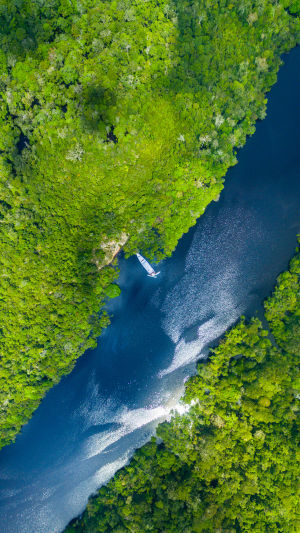A new report says the Amazon has lost 10 percent of its original vegetation, mostly tropical rainforest, in an area roughly the size of Texas in the past 40 years.
From 1985 to 2021, deforestation surged from 490,000 square kilometers to 1.25 million square kilometers, causing unprecedented damage to the Amazon region, according to the Amazon Georeferenced Social-Environmental Information Network (Raisg).
These figures are calculated based on annual satellite monitoring of Bolivia, Peru, Ecuador, Colombia, Brazil, Venezuela, Suriname, and other countries since 1985.
The report is the product of Raisg's collaboration with the BiomassMap project. The latter one is a Brazilian network of non-profit institutions, universities, and tech start-ups.
Raisg issued a statement saying: "The damage is enormous, almost irreversible, and there is no prospect of recovery. The data flashed a yellow light and made the need for coordinated, decisive, and convincing international action as soon as possible."
According to reports, Brazil, which owns about two-thirds of the Amazon rainforest, is also the most severely damaged Amazon rainforest. In the past 40 years, 19% of Brazil's tropical rainforest has been destroyed, mainly because the opening of roads has promoted the expansion of pastures.
As of 2021, 74% of the Amazon region will be covered by tropical rainforest, and 9% will be covered by other natural vegetation types. The 8.5 million square kilometer region is home to 47 million people, according to Raisg estimates.
According to a report released by the Mapbiomas organization, an average of 18 trees are cut down every second in Brazil, and deforestation has increased by more than 20%.
Clearing land for agriculture is believed to be the main cause of deforestation. Mining, urban sprawl, and the construction of wind and solar power plants are also important factors.
Poor law enforcement is the biggest problem
The study showed that 77% of deforested areas are registered properties in Brazil's Agro-Environmental Register (CAR). This means that at least three-quarters of deforestation can be traced to those responsible.
Research shows that nearly 20,000 registered forest properties are logged without action. The problem of weak law enforcement is evident.
Coordinator Tasso Azevedo said: "To tackle illegal logging, we must crack down on crime. Environmental offenders must be made aware of the penalties and risks of illegally destroying native vegetation."
Azevedo also said that we need to act on three fronts: ensuring that all deforestation is detected and reported, that all illegal deforestation is accountable and punished (e.g. fines, embargoes), Illegally deforested areas cannot benefit and are subject to some sort of penalty.





